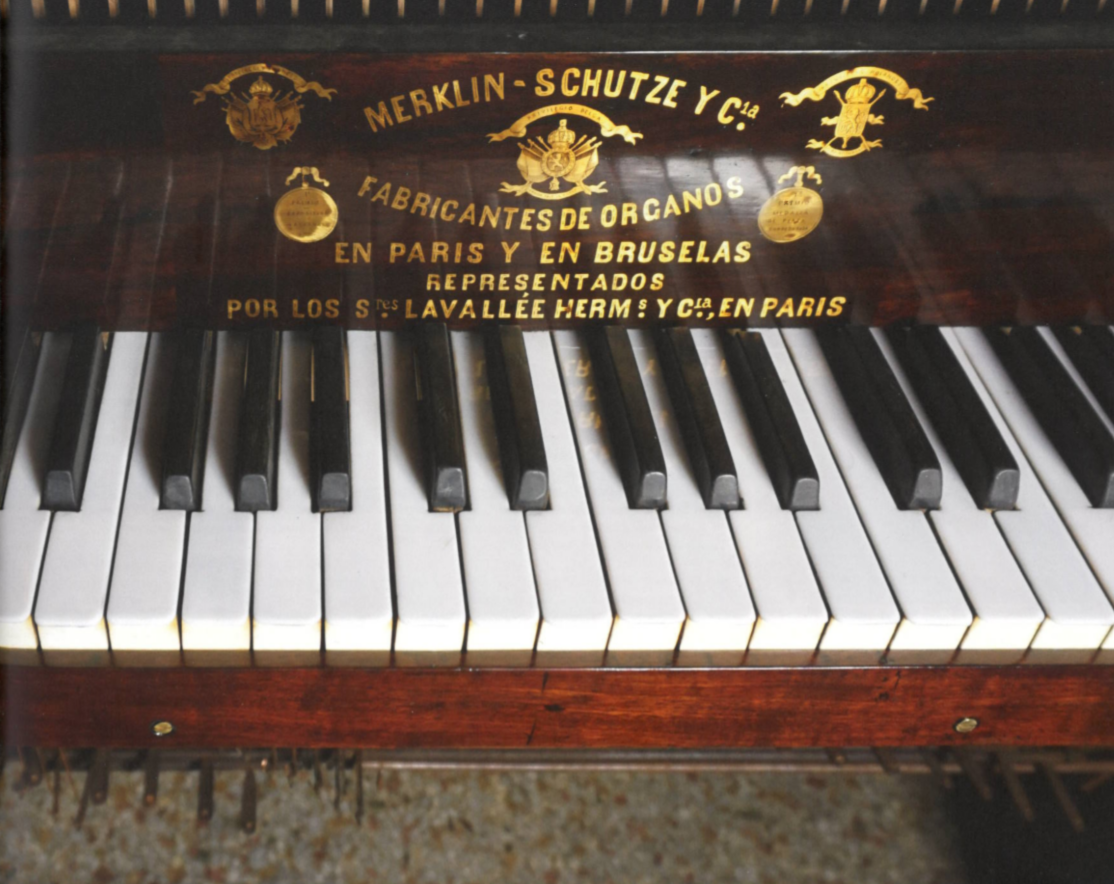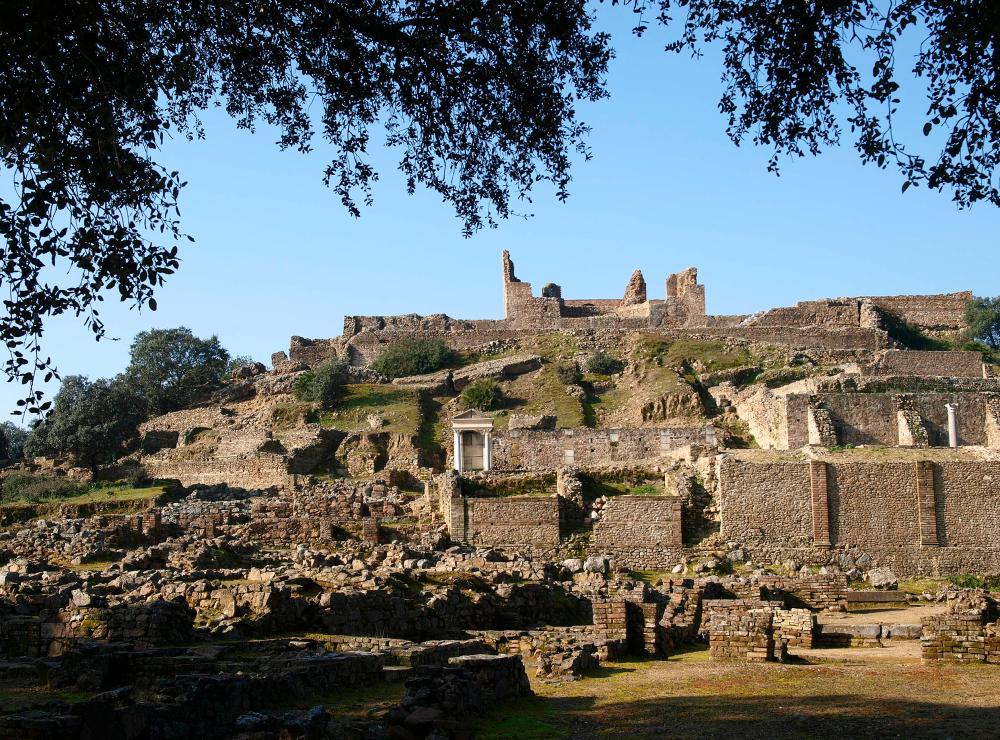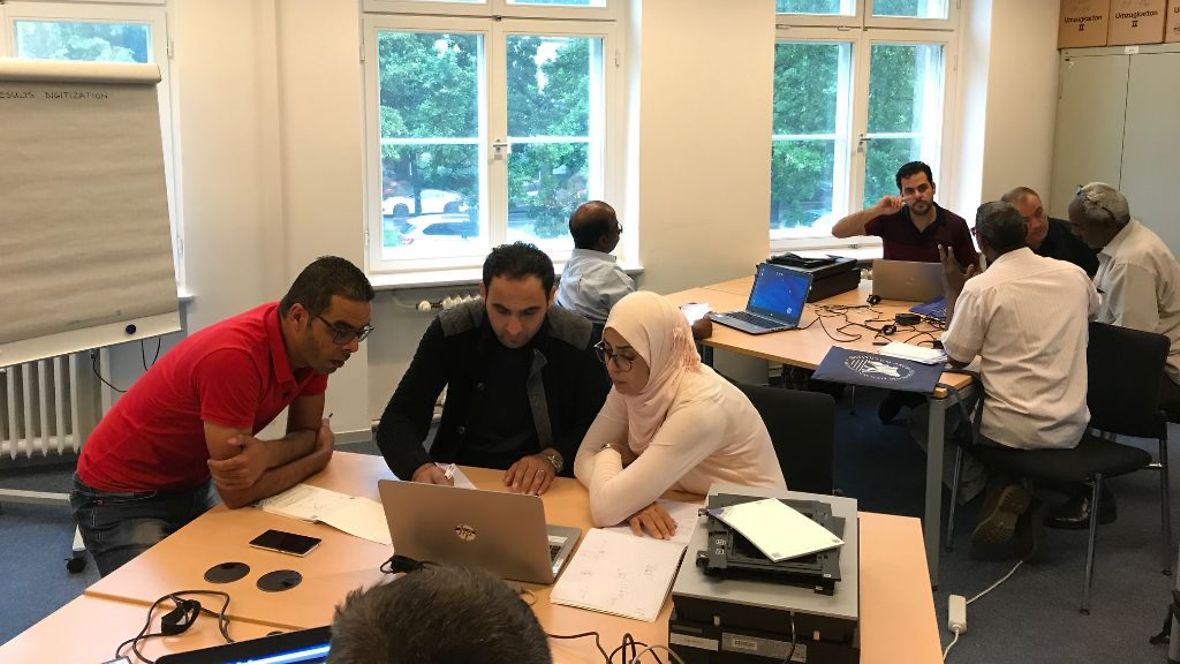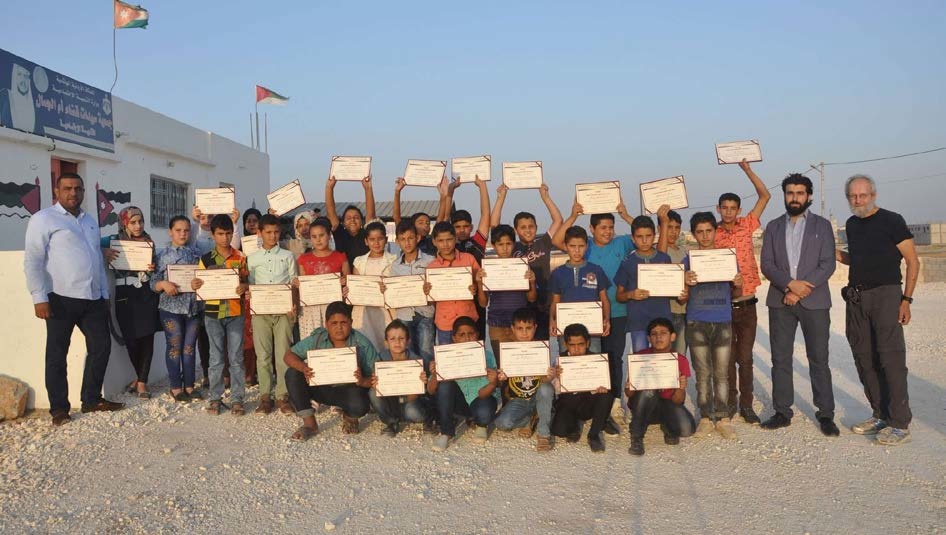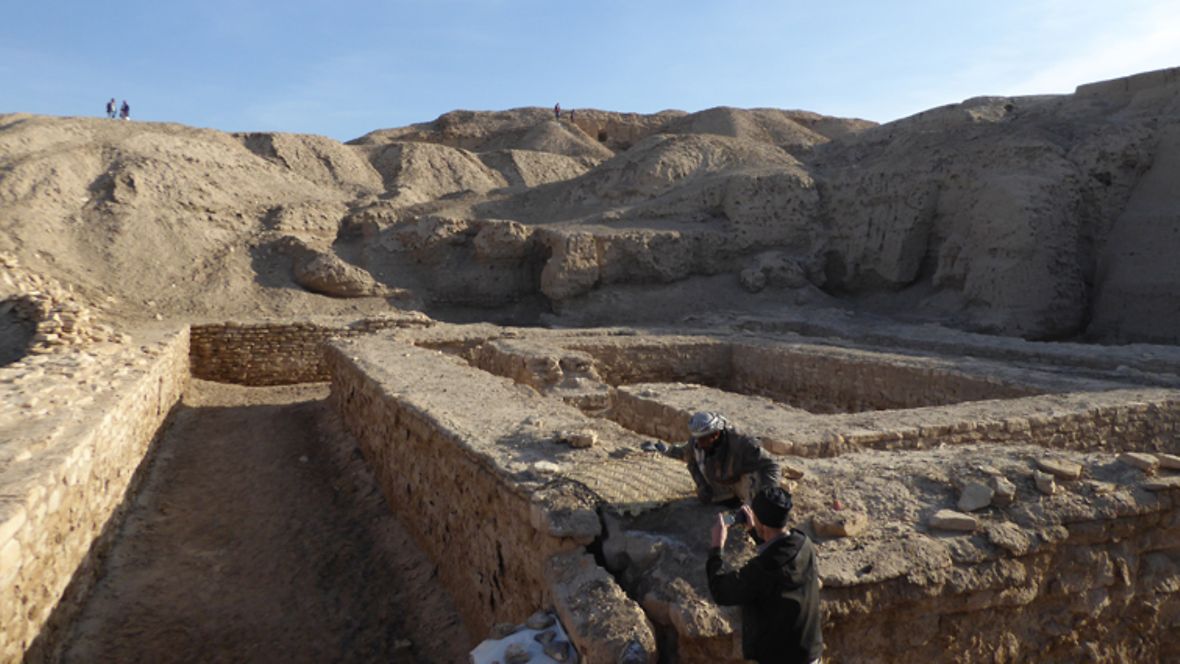The historic Merklin-Schütze organ in Havana was built in 1856 for the Iglesia de la Caridad in Old Havana, the city centre which is now recognised as UNESCO World Heritage. The instrument is not only among the country’s most valuable organs in terms of craftsmanship and artistry, but is also one of the oldest surviving organs in the entire Caribbean. The restoration project will make it playable again, opening up new possibilities for Cuba’s sacred music culture.
cultural heritage
Cultural Heritage on Stage in the Hispano-Roman city of Munigua (Spain)
Archaeologist of the German Archaeological Institute work at the ancient Roman site of Munigua and help to integrate the cultural heritage of Andalusia into the lives of the locals.
Digital Cultural Heritage Register (Sudan)
As part of the Cultural Preservation Program of the German Federal Foreign Office, the German Archaeological Institute (DAI) conducts training courses within the National Corporation for Antiquities and Museums (NCAM). Additionally a digital register for the archaeological sites and monuments of Sudan is being developed since 2017.
Sudan has a rich archaeological heritage, including large monumental buildings such as pyramids, temples and fortifications. Although archaeological excavations and research projects have been carried out in Sudan since the 19th century, the country has no digital register of its archaeological sites and monuments. This increasingly creates problems for NCAM and the international research community. To protect and explore archaeological sites and important monuments the registration and identification of cultural heritage is essential.
Therefore, trainings were conceptualized and the work on the digital register began. In addition to practical, technical and theoretical foundations, pragmatic approaches of curating analogue and digital data are in focus. Corresponding to local requirements the approach is implemented and applied with the accompanying development of an associated database. The basis of the digital register is formed by data compiled by the digitized archive of Friedrich W. Hinkel. The data is based on 14,000 archaeological sites in Sudan.
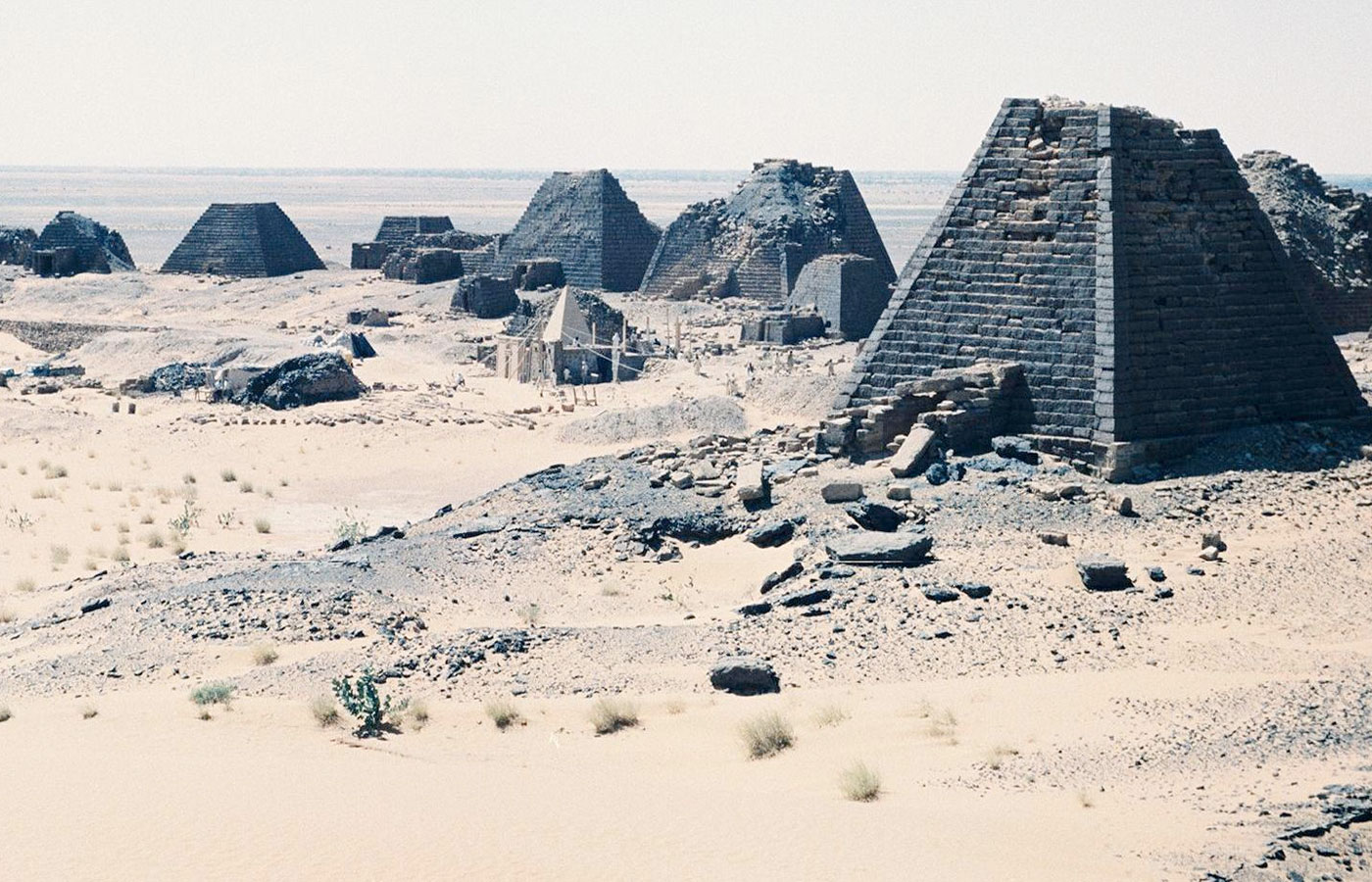
Digital Cultural Heritage – A Sudanese-German Endeavor
In July 2017 a three-week summer school in Berlin was conducted. Representatives of the NCAM, as well as participants from Tunisia and Palestine attended the program. The basic structure of the register, digitization techniques and the curation of data were discussed during workshops. Finally, the participants developed a plan for the realization of a digital register for the cultural heritage sites of Sudan. In autumn 2017, a two-week stay of DAI employees in Khartoum followed. During their stay the first stages of the jointly developed plan were implemented. Together with their Sudanese colleagues the DAI employees sorted and registered analogue data and in the process set up an archive at NCAM. The development and programming of the digital heritage register for Sudan will be conducted in 2018.
The data collection and digital heritage registers are a relevant issues for the entire North African and Arab region. Therefore, the cooperation was extended to interested antiquity services of other member states of the Arab League.
Promoted by: Cultural Preservation Programme of The Federal Foreign Office
Source: Ed. Federal Foreign Office
Image: Workshop for digitalization | © DAI
Read More:
Mare Nostrum-Project: Cultural Center in Umm al Jimal (Jordan)
Considering the massive destruction of cultural heritage in the Middle East, as well as the refugee movements, the Gerda Henkel Foundation set up a “temporary funding priority for endangered and fled scientists from crisis areas” in autumn 2015. In spring of 2016, an “emergency aid program for Syria” was added. Aim of the initiatives: to give scientists the opportunity to continue their research and to initiate archaeological and historical projects in Syria and neighboring countries, involving local actors.
One of the first funding measures was the support of the “Mare Nostrum” project – a network of several independent subprojects in Jordan. The country has received a large number of Syrian and Palestinian refugees living in huge camps as well as in cities and towns. The archaeologist Prof. Dr. Thomas Maria Weber-Karyotakis (German Jordanian University, Amman) developed the project and took over the coordination. The idea behind “Mare Nostrum” was to involve Jordanian and Syrian scientists, craftsmen and workers from the Palestinian and Syrian refugee camps, Jordanian and Syrian students from the Amman universities and the local population alike.
In the northern municipality of Umm al-Jimal, a cultural center for Syrian and Jordanian children and teenager was established in close cooperation with the local women’s cooperative. The aim of the three-month courses for about 20 girls and boys was to teach the participants and their parents, cultural and historical traditions as well as the importance of the cultural heritage. The courses were given jointly by a Jordanian and a Syrian scientist in Arabic.
Source: Gerda Henkell Stiftung (Press release)
Image: Children and teenager of the cultural center holding their certificates (© Thomas M. Weber-Karyotakis)
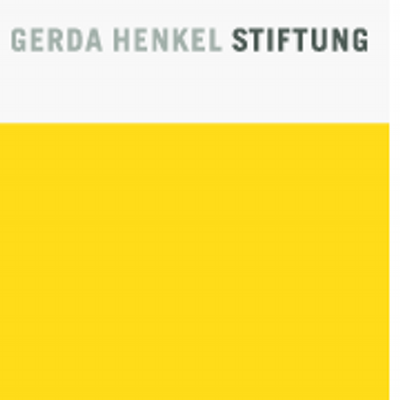
Preserving architecture in the World Cultural Heritage site of Uruk (Iraq)
The German Archaeological Institute project presented here is supported by the Cultural Preservation Programme of the Federal Foreign Office. It helps to preserve architecture in Uruk, facilitates the protection of outstanding monuments and improves tourism infrastructure.
Parts of the highly diverse and outstanding cultural heritage in Iraq have been destroyed as a result of war and political instability. The archaeological site of Uruk is one of the most important ruined cities in Iraq in terms of cultural history.
As far as is currently known, the ancient Near Eastern city was the birthplace of major developments in the history of humankind around 4500 B.C. In 2016, Uruk and other sites in southern Iraq were inscribed in the UNESCO World Heritage List as “The Ahwar of Southern Iraq: Refuge of Biodiversity and the Relict Landscape of the Mesopotamian Cities”. The German Archaeological Institute has led excavations in Uruk since 1954 and also carries out conservation measures.
The German Archaeological Institute project presented here is supported by the Cultural Preservation Programme of the Federal Foreign Office. It helps to preserve architecture in Uruk, facilitates the protection of outstanding monuments and improves tourism infrastructure. The aim is to establish local structures to preserve archaeological sites in line with UNESCO standards and to guide the process involving the key excavation site in order to strengthen cultural identity among the population.
Young Iraqi academics and the local population are specifically included in the planning and preservation, so that they will be able to carry out the work that will repeatedly be needed to conserve archaeological architecture in the future.
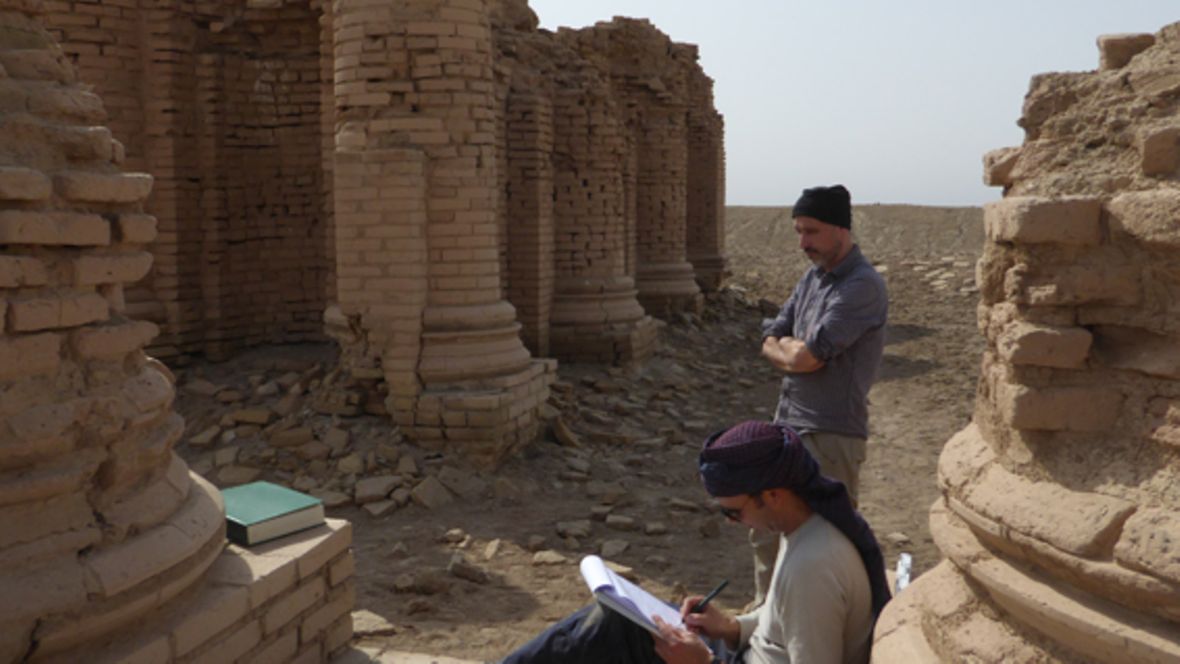
The focus is on drawing up a detailed conservation plan for endangered archaeological buildings that will become increasingly important tourist destinations in the future. These buildings are made of brick, mud brick, rammed clay, chalk stone and cast stone. Some of them are in good condition and can be shown to the public.
In such cases, conservation work is particularly important as regards halting decay in parts of the building that have already been excavated. Conservation concepts adapted to the buildings’ location in the site are often needed.
In these cases, a decision must be made on whether it is better to present the original structure or to develop alternative concepts (such as a 3D presentation). Conservation projects involving archaeological monumental architecture and its subsequent preservation create apprenticeships and jobs in the cultural sector and are also a prerequisite for further planning in the tourism sector, which could develop into a significant source of revenue for the region.
This cultural preservation project fosters collaboration between German and Iraqi experts and the inclusion of young Iraqi archaeologists. It is linked to the work of the Archaeological Heritage Network (ArcHerNet) and the further training course, Iraqi-German Expert Forum on Cultural Heritage, as part of the German Archaeological Institute project, Stunde Null – A Future for the Time after the Crisis.
Read more:
Visualisation of White Temple in Uruk (Irak)
Promoted by: Cultural Preservation Programme of The Federal Foreign Office
Source: Ed. Federal Foreign Office

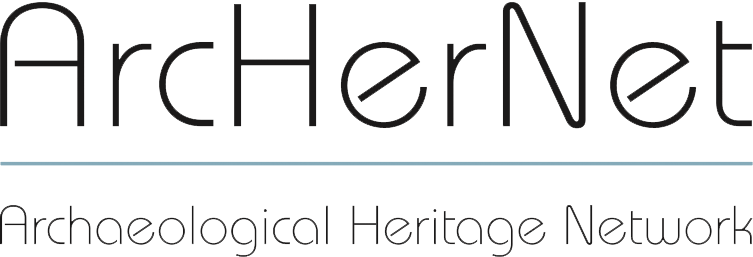
Image: Ground salts are destroying the famous stone building dating from around 4500 B.C. at the foot of the Anu Ziggurat. The aim of the first emergency conservation measures is to make the walls more stable. © M. van Ess, DAI
